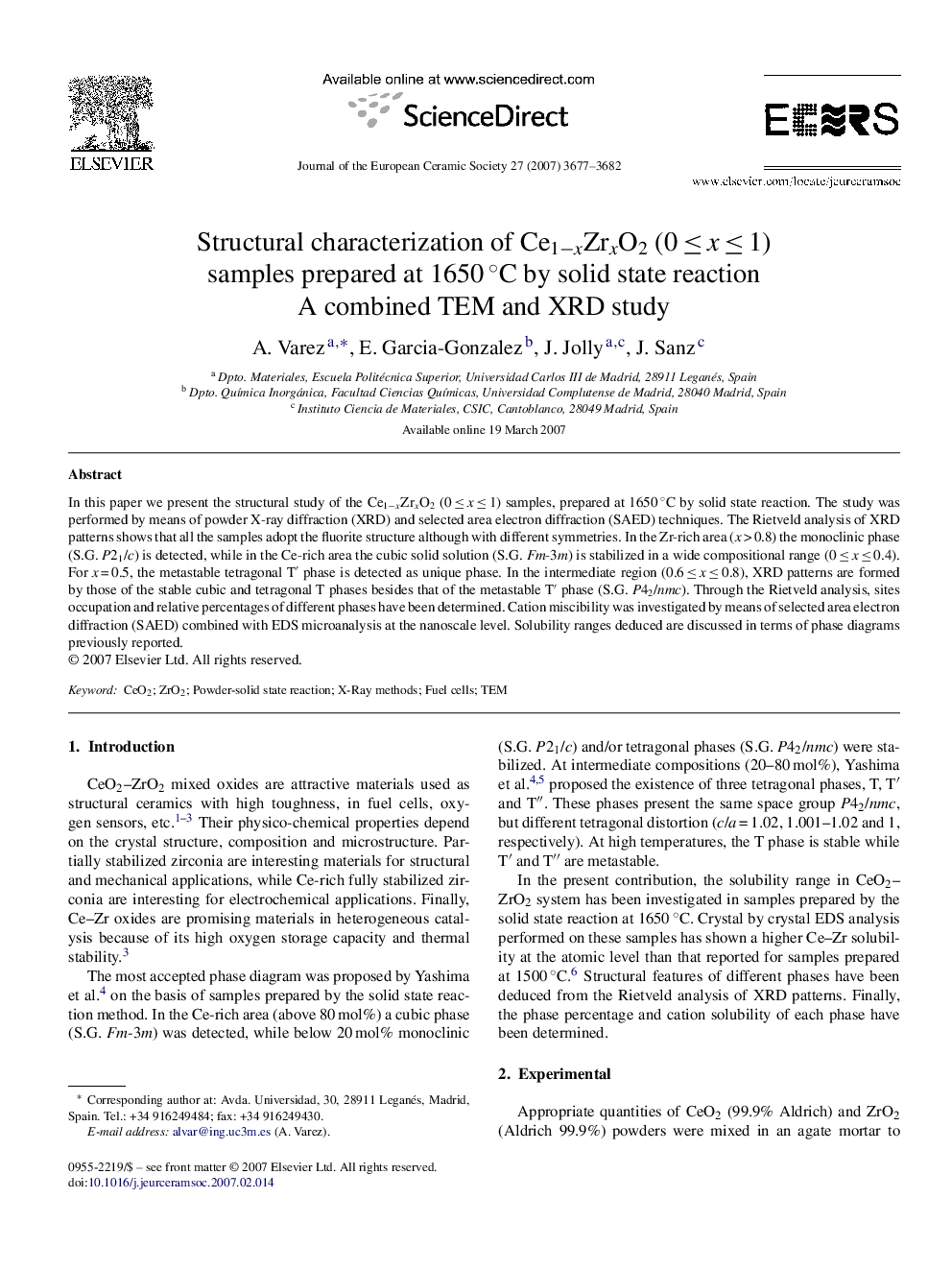| Article ID | Journal | Published Year | Pages | File Type |
|---|---|---|---|---|
| 1476402 | Journal of the European Ceramic Society | 2007 | 6 Pages |
In this paper we present the structural study of the Ce1−xZrxO2 (0 ≤ x ≤ 1) samples, prepared at 1650 °C by solid state reaction. The study was performed by means of powder X-ray diffraction (XRD) and selected area electron diffraction (SAED) techniques. The Rietveld analysis of XRD patterns shows that all the samples adopt the fluorite structure although with different symmetries. In the Zr-rich area (x > 0.8) the monoclinic phase (S.G. P21/c) is detected, while in the Ce-rich area the cubic solid solution (S.G. Fm-3m) is stabilized in a wide compositional range (0 ≤ x ≤ 0.4). For x = 0.5, the metastable tetragonal T′ phase is detected as unique phase. In the intermediate region (0.6 ≤ x ≤ 0.8), XRD patterns are formed by those of the stable cubic and tetragonal T phases besides that of the metastable T′ phase (S.G. P42/nmc). Through the Rietveld analysis, sites occupation and relative percentages of different phases have been determined. Cation miscibility was investigated by means of selected area electron diffraction (SAED) combined with EDS microanalysis at the nanoscale level. Solubility ranges deduced are discussed in terms of phase diagrams previously reported.
